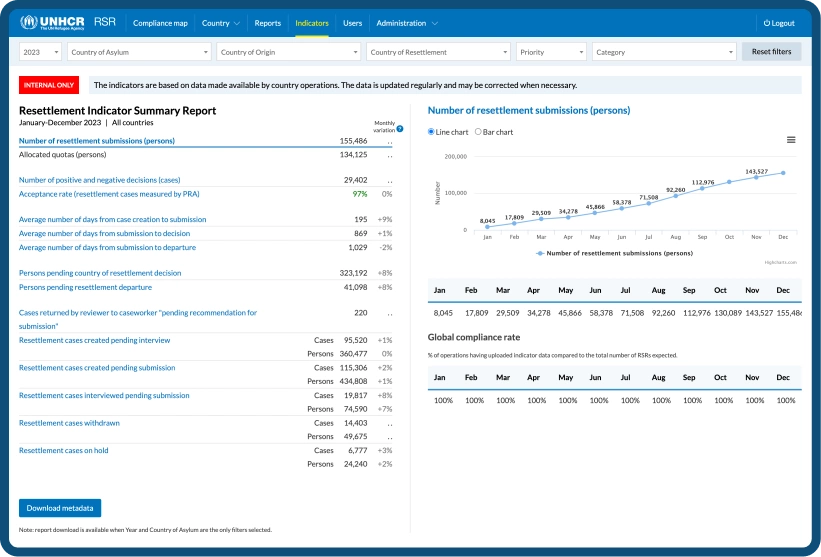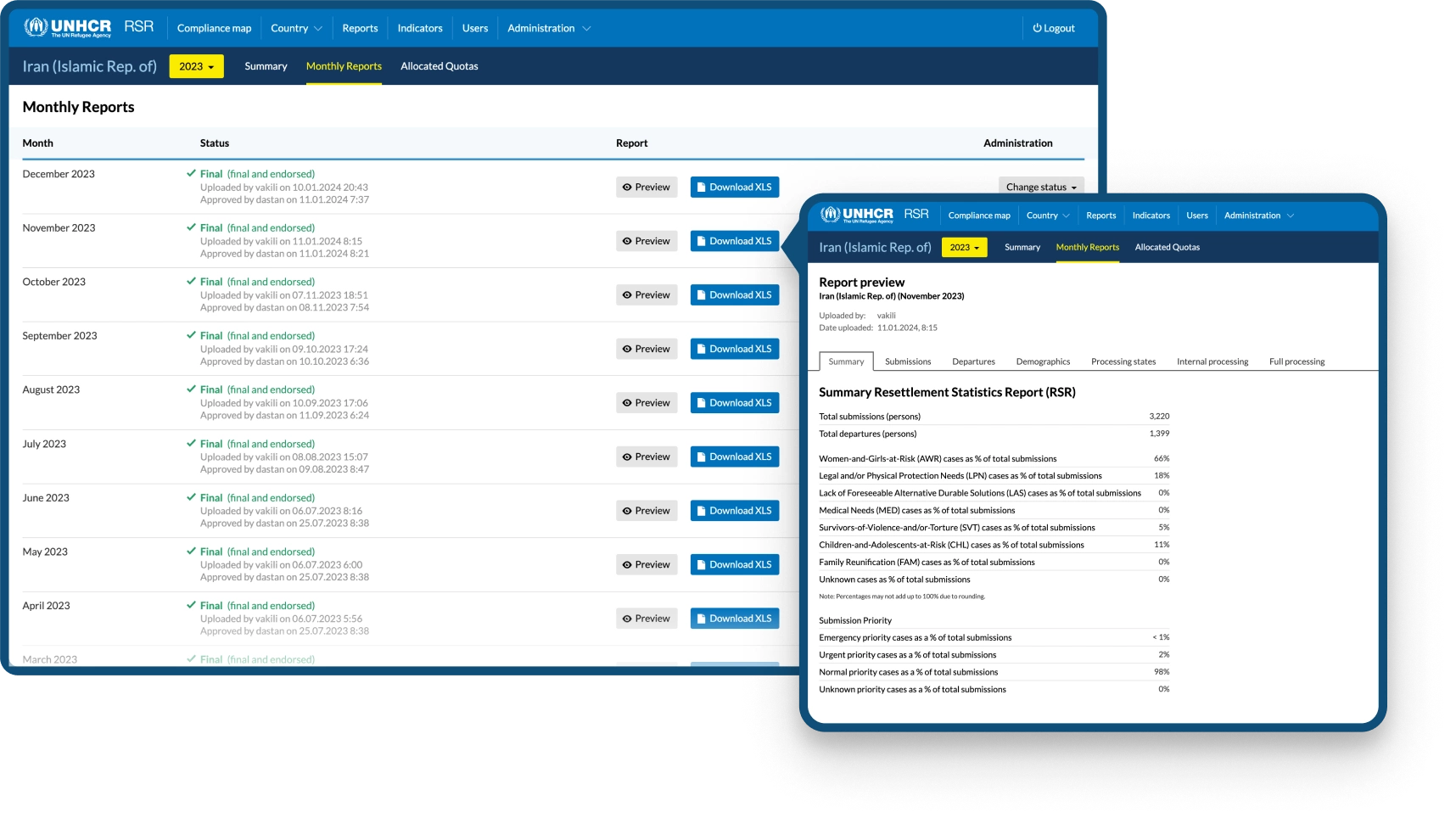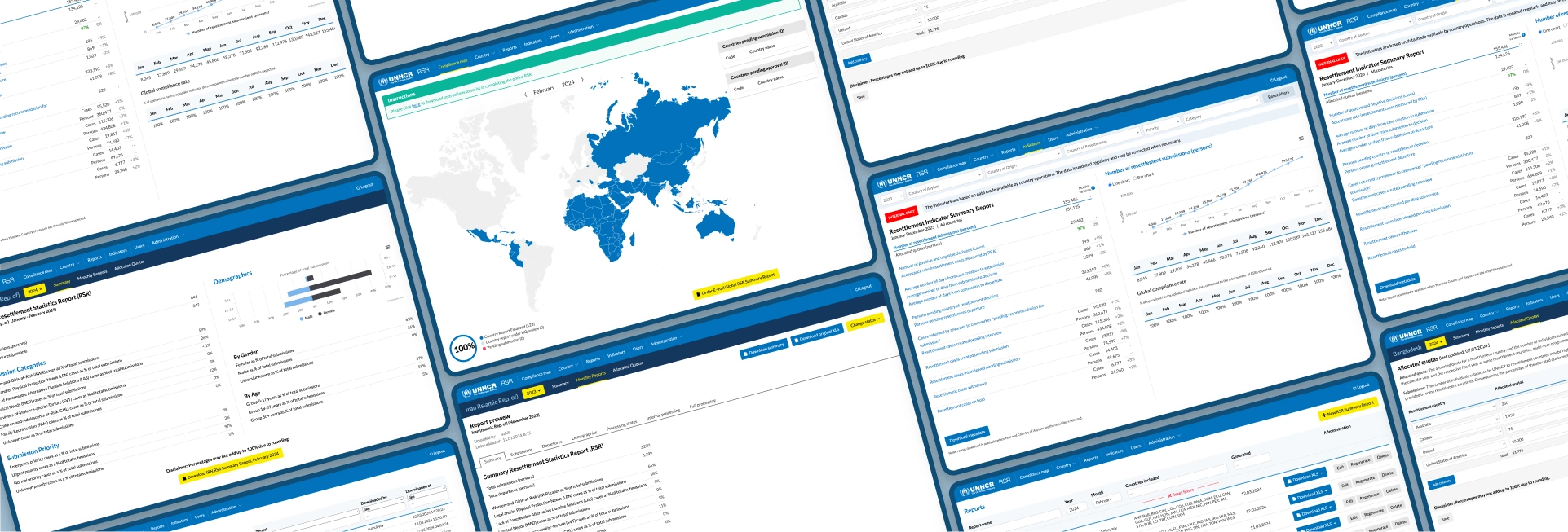Tarek Abou Chabake

The Resettlement Statistical Report (RSR) system is a tool developed to better organize and share information on the resettlement of refugees around the world. It includes features that shows which countries are keeping up with their reporting, encouraging everyone to stay on track. Designed to be user-friendly, it helps ensure that all the necessary data is submitted on time with automated reminders.


Developing the Resettlement Statistical Report (RSR) system introduced a novel tool into the UNHCR landscape, requiring our team to work closely with UNHCR to devise a unique approach that balanced user-friendliness with complex data handling. Ensuring the timely and accurate collection of critical data each month was a paramount challenge, necessitating robust security and data validation protocols to protect sensitive information. The project's global scope brought forward challenges in standardizing data collection and reporting across diverse regions. Throughout this process, continuous collaboration with UNHCR was essential to align our technical solutions with the real-world needs of resettlement efforts.
Leveraging our history of successful product deliveries for UNHCR, our team entered this project with a high level of confidence in our ability to overcome its unique challenges. Our prior experiences had not only honed our technical and collaborative skills but also deepened our understanding of UNHCR's mission and operational needs.



Addressing the technical challenges posed by users uploading extremely large files, often exceeding 30,000 rows per sheet, required a thoughtful approach as the data volume grew cumulatively towards the year's end. To manage this efficiently, it was essential to implement asynchronous processing of the files, ensuring that the system could handle large datasets without compromising user experience. Data validation emerged as a critical component of data ingestion, tasked with ensuring the integrity and accuracy of the uploaded information. Our system was designed to provide immediate feedback on data issues, enabling users to quickly identify and address errors. Additionally, we offered a summary download feature that detailed all encountered issues, complete with descriptions of the problems and the specific data cells affected, further facilitating the correction process.
In the realm of data visualization and internal reporting, the challenge was not just to accurately display the growing volume of resettlement data, but also to make it accessible and actionable for all stakeholders. To meet this need, our system was equipped with dynamic data visualization tools that could transform complex datasets into intuitive graphs and charts. These visual representations allowed users to quickly grasp trends, patterns, and anomalies within the data, enhancing decision-making processes. Furthermore, our platform supported the generation of detailed internal reports, tailored to the specific needs of different UNHCR teams and external partners. Each report featured the capability to drill down into data specifics, providing a granular view of resettlement efforts, outcomes, and areas needing attention. This blend of comprehensive visualization and reporting functionalities ensured that data wasn't just numbers in a database, but a narrative tool for storytelling and advocacy in the global resettlement discourse.

A pivotal aspect of enhancing the RSR system was the introduction of automated communication and sophisticated user management functionalities. Recognizing the importance of timely and broad dissemination of resettlement data, we implemented an automated tweeting feature. This allowed for instant sharing of updated reports and insights with a wider audience, directly from the system to UNHCR's Twitter feed, thus increasing visibility and engagement with the data. Additionally, once data was approved, it was made publicly available through an API, enabling developers and analysts to access and utilize this information for further research and development. This approved data was also visualized and made interactive on the RSQ platform, providing an intuitive interface for the public to engage with and understand resettlement trends and patterns.
To maintain consistent data quality and submission timeliness, automated emails were set up to notify country focal points responsible for data administration and uploads about deadlines, issues, or updates. This feature significantly improved the efficiency of data collection processes and ensured that focal points were always informed and prepared to act on necessary tasks.


